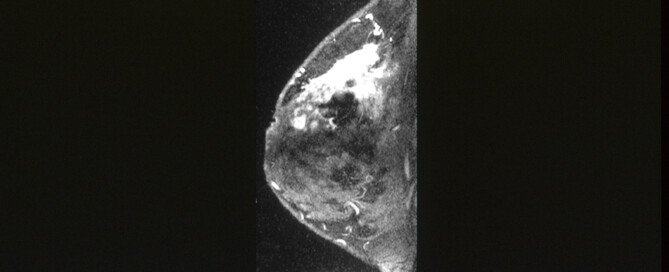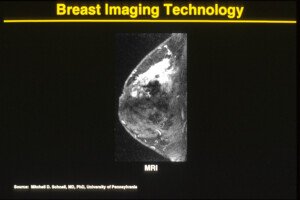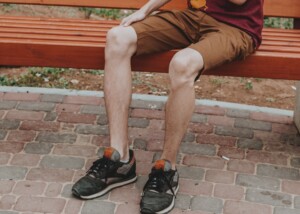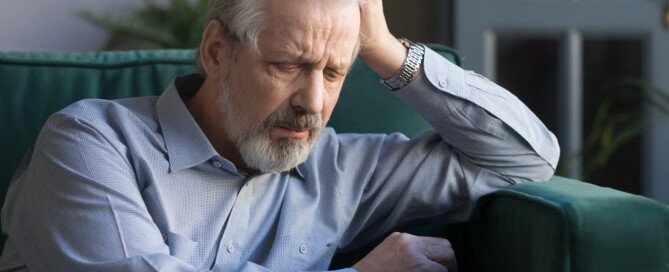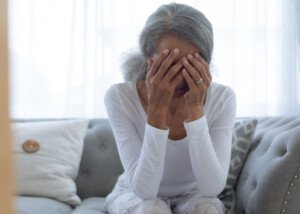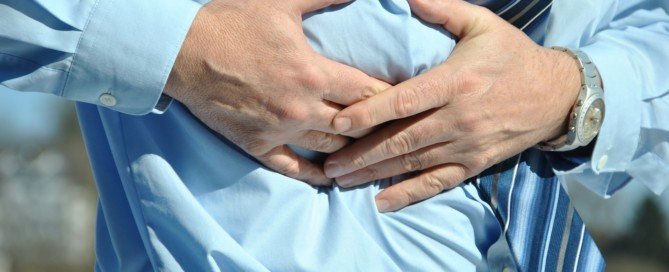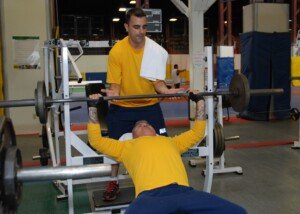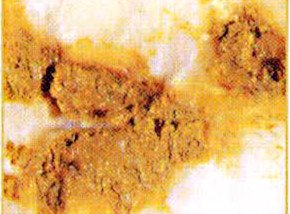NDE’ers Being Told, “It’s Not Your Time” During CPR

During an NDE, are people told “It’s not your time” only when it seems that the doctors or EMTs won’t give up on the CPR?
A common theme in near-death experiences is that the individual is told, “It’s not your time; you must go back,” by either a deceased loved-one, spirits, angels or even God. It’s usually a deceased loved-one who makes this announcement.
Suppose Arista goes into cardiac arrest due to anaphylactic shock from the contrast dye that was injected into her for her MRA scan.
A crash cart is nearby and medical staff immediately begin resuscitation attempts. Arista has been down (clinically dead, heart stopped) for over 30 seconds.
She encounters her deceased grandmother in a brilliantly colored valley of incredible peace and joy. “It is not your time; you must go back.”
Somehow, Granny knows that the doctors are working furiously on getting Arista’s heart restarted and are willing to keep up their efforts for as long as it takes.
Arista decides to “go back,” and suddenly, the doctor sees a heartbeat. It’s as though the deceased loved-one knew this would happen. But what if Arista had decided, “No, I want to cross over”?
And she steps across the bridge. Would the doctors then suddenly say, “I give up, let’s call time of death”? (After all, this would match up with what happens to Arista during the NDE when she crosses the bridge.
Of course, it may also turn out that the doctors keep trying resuscitation for 40 minutes and then give up.)
Do you see what I’m getting at here?
Somehow, the deceased grannies, grandpas, parents, spouses, uncles and aunts know the difference between a woman whose heart stopped inside a hospital and one whose heart stopped at the hands of a violent boyfriend who strangled her in the woods.
Well, you know he’s not going to attempt CPR, so when that woman meets up with her deceased grandma—there won’t be any “It’s not your time; you must go back.”
My question is: Suppose in Arista’s case, she decides to go back…and just as she’s being flung backwards through the tunnel, towards her body…the doctor suddenly gives up hope and says, “Enough already; she’s gone; let’s call time of death”?
Will Arista suddenly find herself being yanked back through the tunnel towards Nana?
“That is a good question about the interplay of the choice of NDERs to return and the choice of those attempting to resuscitate them to either continue resuscitation or stop it,” says Jeffrey Long, MD, author of the New York Times bestseller, “Evidence of the Afterlife: The Science of Near-Death Experiences.” Dr. Long is a radiation oncologist in Houma, Louisiana.
Or, to put my question another way, suppose the doctors won’t give up the resuscitation attempts, and Arista, having decided to “go back,” is flying backwards through the tunnel, watching her grandmother’s form become smaller and smaller in the increasing distance.
Then suddenly…a gunman bursts into the room and shoots the doctors dead. Will Arista be yanked back to her grandmother?
Or will this yanking never occur because Nana already knew that the gunman would burst in and shoot everyone dead, and thus would have told Arista, “Welcome! Come with me to eternity!”?
Dr. Long continues, “My answer must be speculative, but my best guess is that the wise spiritual beings on the other side have the good sense of whether resuscitation will be continued or not.
“We have many NDERs were told, “It’s not your time,” were not being actively resuscitated by a medical team, or anyone else.
“Many NDERs who are aware that ‘It’s not your time’ have no other people around them.”
Wow. Does the spirit world know the future?
Why is there even a need for the spirit world to say, “It’s not your time?” if the future is already determined? Or isn’t it?
So it looks as though often, a person whose life-threatening situation is fuzzy (such as drowning in the presence of other people who can give CPR) gets to choose to “go back,” while someone whose life-threatening situation is more defined, such as having a massive heart attack when nobody is around — doesn’t get to choose — though there are cases like this in which the person came back from an NDE.
But let’s go a step further: The person is crushed beneath a car. We know that in that case, there will be no “It’s not your time.”
A compelling question is why are NDE’ers being told, “It’s not your time; you must go back,” if ultimately, God controls destiny? If the NDE’er controls it, then why does Gramps appear to tell him, “It’s not your time”?
What kind of NDEs did people who went into cardiac arrest 200 years ago have?
I’m talking people who had conditions that could have been remedied by CPR, but because CPR wasn’t around back then…these people certainly had a much different NDE—more like an ADE: actual death experience.
So it seems as though, to some extent, the choice to “go back” or not hinges on the presence of people who know CPR.
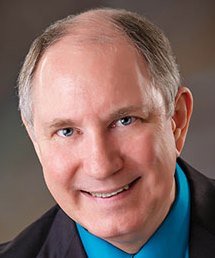 As a leading NDE researcher and a medical doctor, Dr. Long has appeared on national media including NBC Today, ABC with Peter Jennings, the Dr. Oz Show, the History Channel, the Learning Channel and National Geographic.
As a leading NDE researcher and a medical doctor, Dr. Long has appeared on national media including NBC Today, ABC with Peter Jennings, the Dr. Oz Show, the History Channel, the Learning Channel and National Geographic.
 Lorra Garrick has been covering medical, fitness and cybersecurity topics for many years, having written thousands of articles for print magazines and websites, including as a ghostwriter. She’s also a former ACE-certified personal trainer.
Lorra Garrick has been covering medical, fitness and cybersecurity topics for many years, having written thousands of articles for print magazines and websites, including as a ghostwriter. She’s also a former ACE-certified personal trainer.
.
Top image: ©Lorra Garrick
NDE’ers Told They’d Come Back in a Vegetative State?

Ever wonder what kind of near-death experience that a person in a persistent vegetative state had?
Thousands of people have reported NDEs during the time their heart was stopped and brain not receiving blood flow and oxygen.
Often, these individuals are faced with choosing between crossing some threshold (beyond which they won’t be able to “return” to their body), or “going back” to their body.
In other cases, they want to cross over, but are “forced” back into their body. Many are shown, while having the NDE, snippets of what their future holds. This may include an arduous medical recovery.
Obviously, none of these NDE’ers came back as vegetables. However…just what kind of NDE does someone who ends up in a permanent vegetative state have?
Let’s assume that cardiac arrest (regardless of cause) results in what we know as the near-death experience.
This means we can assume that Terri Schiavo and Nancy Cruzan both had the same NDE (as far as common themes) as did any one of the NDE’ers who have shared their story on nderf.org — a site created by NDE researcher Jeffrey Long, MD, author of the New York Times bestseller, “Evidence of the Afterlife: The Science of Near-Death Experiences.”
Dr. Long is a radiation oncologist in Houma, Louisiana.
Schiavo and Cruzan lived for years in a persistent vegetative state before dying. Quinlan lived for nine years in an irreversible coma before dying, though some reports say persistent vegetative state.
One has to wonder: Were these three individuals, along with the hundreds of thousands of other people who live as vegetables or in irreversible comas, told during their NDE that they’d be returning to their bodies as a vegetable?
Were they told, “It’s not your time; you must go back, but you will be in a permanent vegetative state”? Or were they only told, “It’s not your time; you must go back”?
And then they felt themselves going “back,” having no idea what was in store?
Or perhaps some of them tried to cross over after being told of their fate, but were “forced” back through the tunnel.
Maybe some had no idea what fate awaited them back in their bodies, but tried to cross over anyways.
Were NDE’ers who came back as vegetables okay with the news from spirits, angels or deceased loved-ones that they’d be coming back as a vegetable? Here’s what Dr. Long says:
“When someone is told, ‘You can cross over or you can go back; the choice is yours.’ we cannot assume that they were informed that they would be in a vegetative state.
Many NDE’ers who are given a choice to cross over or return are shown a future vision of their earthly life if they choose to return.
“They may be shown how difficult the recovery is from their life-threatening event. They may also be shown how difficult the future life will be.
“It is possible that some people having an NDE knew they would return in a vegetative state and chose to do so.
“Since this group of people cannot communicate well (or at all), it may be difficult to know this for sure. We can only understand NDE from people who return and are able to adequately communicate the experience.
“We simply don’t know about the experience of those in a vegetative state, although my best guess is that they have NDEs similar to all others, and I suspect many are aware that they would return in a vegetative state, but understand that there are important reasons for them to do so. This is speculative.”
One More Thing to Consider About NDE’ers Who Return As Vegetables
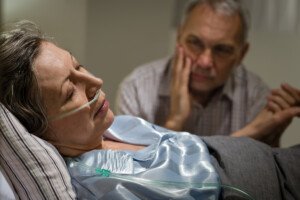
Shutterstock/CandyBox Images
A common thread among NDEs is the absence of time perception. Time stops. Time is endless. Time doesn’t exist.
Suppose a person is told, “If you go back, you will be a vegetable.” But that person has also learned, via near-death experience, that in the grand scheme of things, living out the rest of their life in a vegetative state will serve a significant purpose.
Knowing this, and also knowing that one day they will indeed cross over the “barrier” to the eternal paradise, this individual welcomes returning as a vegetable.
Now here’s something very riveting to consider: From a family member’s point of view, this individual’s vegetative state (or permanent coma) is harrowing. But from the patient’s point of view…it may seem like only moments passed.
Suppose they go “back” to their body and live another 20 years in a vegetative state. Then they die for good. That’s 20 years.
But from THEIR point of view, since they had NO awareness during that 20 years…it will seem like only seconds passed—and before they know it—they are once again seeing the brilliant light and deceased loved-ones welcoming them to cross over for eternity. Thus, the decision to return as a vegetable would be quite easy.
But this begs a question: What about vegetative people who, years later, briefly come out of this state and have awareness?
There are a few cases in which a person who was in a PVS for years mysteriously popped out of it enough to speak with family members, then slipped back into it and never aroused again or aroused only a few more times, then died.
Well, from their point of view, time passage between their first NDE and actual death 25 years later, with one or two episodes of, say, five weeks of consciousness in between, would seem like only the time passage of those five weeks of consciousness.
But then what about those individuals who come back from an NDE as vegetables—but after years like this—exhibit signs that all along, they’ve been aware?
Functional MRI brain scans have shown “lit up” areas of the thinking part of the brain in several such patients, suggesting that these patients can hear and have full consciousness—but no way to communicate—not even by squeezing their eyes shut.
And if that’s confounding, what about people who, after cardiac arrest (and presumably an NDE), come back to live for years in a minimally conscious state?
 As a leading NDE researcher and a medical doctor, Dr. Long has appeared on national media including NBC Today, ABC with Peter Jennings, the Dr. Oz Show, the History Channel, the Learning Channel and National Geographic.
As a leading NDE researcher and a medical doctor, Dr. Long has appeared on national media including NBC Today, ABC with Peter Jennings, the Dr. Oz Show, the History Channel, the Learning Channel and National Geographic.
 Lorra Garrick has been covering medical, fitness and cybersecurity topics for many years, having written thousands of articles for print magazines and websites, including as a ghostwriter. She’s also a former ACE-certified personal trainer.
Lorra Garrick has been covering medical, fitness and cybersecurity topics for many years, having written thousands of articles for print magazines and websites, including as a ghostwriter. She’s also a former ACE-certified personal trainer.
—
Sources: en.wikipedia.org/wiki/Cruzan_v._Director,_Missouri_Department_of_Health en.wikipedia.org/wiki/Terri_Schiavo_case nature.com/news/neuroscience-the-mind-reader-1.10816
Natural Cancer Cure: Woman Who Cured Breast Cancer with Vegan Diet
Ever wonder if a natural cancer cure might exist? Such as in the form of diet?
Breast cancer survivor Ruth Heidrich believes so.
She was diagnosed with metastatic breast cancer 35+ years ago at the age of 47.
Heidrich had refused chemotherapy and radiation, despite bone scans showing that the breast cancer had spread to both femur (thigh) bones and pelvis. An X-ray revealed the cancer was also in one of her lungs.
This interview is strictly meant to accurately present what Heidrich told me; hence, this post falls under the category of interview, not medical advice.)
Ruth Heidrich discovered a lump in her breast during a breast self-exam. Cancer was confirmed after a physician performed an excisional biopsy (surgery).
Prognosis?
It was so serious that I got second, third and fourth opinions. No doctor could tell me if I had three months, three years, or what. The oncologists all recommended chemo, radiation and tamoxifen.
Before diagnosis, what were your eating habits?
I thought that, since I had studied nutrition during college, I was eating the healthiest diet possible, although it was actually sad: the Standard American Diet.
I had virtually cut out red meat, increasing my fish and chicken intake to compensate for the animal protein which I mistakenly thought was needed, and drank a lot of powdered skim milk, again, mistakenly thinking this would make my bones strong.
Actually, as scientific studies show, animal products are not any healthier at all, and in fact were most probably the cause of my breast cancer!
Why did you shun chemotherapy?
Two weeks after my cancer diagnosis, I spotted an announcement in the newspaper, which was for a clinical research study to investigate the validity of the low-fat vegan diet versus standard chemo/radiation to reverse cancer.
I literally ran to the phone and found myself speaking to the study’s head researcher, John McDougall, MD.
When I got to his office, he showed me the bleak results of conventional medical treatment, and I then decided to enroll.
This study involved what?
I had to agree to switch my diet to low-fat vegan, that is, 100% plant foods. This meant no animal foods at all and no added oils.
I went home and began this diet within two weeks from the biopsy with its horrible diagnosis.)
Did you inform the doctor who diagnosed you what your plans were?
Yes, and he just shook his head in disgust, saying that “Diet has nothing to do with breast cancer.” I knew better because I had seen the scientific studies demonstrating otherwise.
After you started this diet, how much time went by before you returned to the diagnosing doctor to check if the cancer still was there?
It was a matter of just weeks. The initial bone scan with the “hot spots” was two weeks following diagnosis.
A month later, those “hot spots” had significantly receded, and within three months, they were completely gone.
The chest X-rays, however, to this day still show the encapsulated tumor that’s in my left lung; it hasn’t grown in 25 years.
How was the cancer in your breast determined to be gone?
After that first biopsy revealed no clear margins (they hadn’t gotten all the cancer), I had more surgery. (the excisional biopsy was an attempt to get the whole thing out.
A modified radical mastectomy was determined to be needed because the cancer had also spread throughout the breast as well as the bones and lung. realize, it’s not cancer in breast tissue that kills you — it’s cancer cells that metastasize to vital organs, usually the bones, LIVER, lungs, and brain. All of the follow-up tests continue to show no recurrence of the cancer.
When the bone cancer disappeared, how did the physicians react?
They had no explanation for how this happened and told me that my new diet couldn’t have any effect on the spread of the cancer, that I was taking a risk in continuing to refuse chemo and radiation.
Using a layperson’s perspective, explain why the cancer doctors did NOT get excited about your situation and did not tell their colleagues.
All MDs go through fairly standard training and are usually taught that diet does not cause cancer, and therefore, certainly can’t cure or reverse it, that only chemo, radiation, or hormone manipulation can treat it.
Of course, the pharmaceutical companies stand by, always ready to supply the chemo and hormone blockers. A physician who “dares” try anything different, such as dietary manipulation only, violates a code or “community standard of practice.”
Therefore, even if an MD believes it could work, he or she takes a big risk in going against conventional medical protocols.
Another factor to consider, and I’m sure that Dr. McDougall will agree with, is that MDs and drug companies will not make any profit treating cancer this way. Actually, I think our health care industry would dissolve if people went vegan!
Do you stand to get any financial gain by fabricating any of this?
I don’t have anything to gain financially — fact is, I’ve invested a great deal of energy, time, and gas, visiting cancer patients, giving talks, getting on the radio, and writing books — all to little or no avail.
Ever considered submitting your medical documentation to various medical or cancer organizations?
If even physicians like John McDougall, Michael Klaper, Neal Barnard, Michael Greger, Terry Shintani, and more., and even one of the most widely respected nutrition scientists in the world, T. Colin Campbell, PhD, can’t convince them, I myself really don’t stand much of a chance.
I’ve also approached the Susan G. Komen Foundation and American Cancer Society, and got nowhere because they rely on the mainstream medical approach.
**********
A point to consider: Technically, a vegan is someone who avoids all animal-derived foods, but doing such doesn’t always mean a healthy diet, if this “vegan” consumes a lot of sugar, processed refined food, additives, preservatives and artificial sweeteners.
Heidrich has to her credit more than 900 trophies from multitudes of athletic competitions, including Ironman Triathlons, Half Ironmans, and dozens of marathons and ultra-marathons.
She has won eight gold medals from state and national level Senior Olympics, and is the author of three books.
“Ms. Heidrich’s story illustrates the importance of nutrition when fighting cancer,” says Jonathan Stegall, MD, an integrative oncologist and medical director for The Center for Advanced Medicine, an adult cancer treatment center in Alpharetta, GA.
“We have a significant amount of research showing that nutrition is important for patients with cancer as well as for those who want to prevent cancer.
“There are other stories of patients who have beaten cancer relying mostly or exclusively on nutrition.
“However, it is important to note that these patients are very rare. So while I acknowledge that it’s possible to cure cancer with diet alone, it isn’t very likely.
“Consider someone who wants to accumulate wealth. One way to do that is to buy a lottery ticket.
“Some people have gotten rich by winning the lottery, so it’s possible – but it isn’t likely.
“In fact, it’s a poor choice for accumulating wealth, since there are many other approaches which have proven to be more effective.
“Similarly, solely relying on nutrition to beat cancer is a poor choice, since we have many other treatments which have been shown to be more effective.
“I share Ms. Heidrich’s passion for nutrition, and believe that it is a very important aspect of cancer treatment.
“For example, I put all of my patients on a plant-based eating plan, and provide recipes as well as advice on fasting.
“But I also want to caution people that as important as nutrition is, it should never be the focus of their cancer treatment plan.
“This is where integrative oncology really shines, where we strategically combine conventional treatments such as surgery, chemotherapy and radiation with evidence-based natural therapies such as nutrition, supplementation, stress reduction therapies, lymphatic therapy, mistletoe, etc.”
Ruth E. Heidrich
RuthHeidrich.com
Author of “CHEF,” “A Race for Life,” and “Senior Fitness”
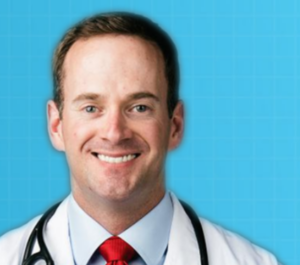 Jonathan Stegall, MD, provides a long-awaited remedy for our cancer problem. Having a successful integrative oncology practice in Atlanta, GA, he’s seen firsthand what works and what doesn’t with cancer treatment. Dr. Stegall is the creator of the Cancer Secrets Podcast and author of “Cancer Secrets,” available on Amazon.
Jonathan Stegall, MD, provides a long-awaited remedy for our cancer problem. Having a successful integrative oncology practice in Atlanta, GA, he’s seen firsthand what works and what doesn’t with cancer treatment. Dr. Stegall is the creator of the Cancer Secrets Podcast and author of “Cancer Secrets,” available on Amazon.
 Lorra Garrick has been covering medical, fitness and cybersecurity topics for many years, having written thousands of articles for print magazines and websites, including as a ghostwriter. She’s also a former ACE-certified personal trainer.
Lorra Garrick has been covering medical, fitness and cybersecurity topics for many years, having written thousands of articles for print magazines and websites, including as a ghostwriter. She’s also a former ACE-certified personal trainer.
.
Top image: cancer.gov
Look Tall with Shoe Lifts: Review of Inserts
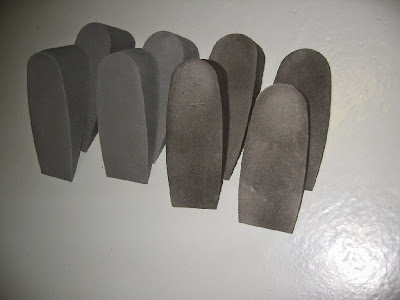
There are many shoe lifts out there, but which truly work best for making you taller?
Many people want to be tall or taller. It’s no secret that many men, and women, wish to be taller; especially men.
Women easily achieve this with high heeled women’s shoes, but men don’t have this option for appearing tall with men’s shoes — unless they insert shoe lifts. Though some men’s shoes come with built-in shoe lifts.
Shoe lifts will create the illusion you are taller without it showing, as in high heels. Some shoe lifts slip right in the shoe, while others have an adhesive.
A lot of men and women do wish to be taller; even some tall people would like a little more height. Being tall has been proven to be a great asset in the business world, and an extra inch can make a difference.
I ordered three pairs and got a fourth pair free: one quarter inch, one inch, one and a quarter inch, and then the free one at one and a half inch.
I recently purchased shoe lifts online (Canfield Plastics), even though I am considered tall, at 5-8. I’d rather appear to be a natural 5-9 if I can accomplish this with shoe lifts inside my sneakers.
Some shoe lift companies offer deals where you save by buying three shoe lifts at a time, and the shoe lift heights range from one-quarter inch to two inches or slightly more than two inches.
The quarter inch was for my four-inch heel pump shoes, but these are generic shoe lifts and thus they do not fit into the women’s shoe pump design.
The inch and a half shoe lifts were for my dress boots, but with the shoe lift inside the boot, I am unable to zip the boot up.
An inch and a half may not seem like a lot, but this is too high for a regular shoe or sneaker; your heel will be practically sticking out of the shoe and every time you walk, you’ll struggle to keep the shoe on. It will also be obvious you have a shoe lift.
I can zip my boots up with the inch and a quarter lift.
And the inch lift go inside my sneakers. The inch and a quarter leave my heel more noticeable than it should be, and it feels like the sneaker will slip off with each step.
They are comfortable; not hard as wood, but not soft enough to lose height from your body weight. So if you wish to be taller, buy shoe lifts. They aren’t cheap, either, but investigate the various package deals.
If you’re wondering why a 5-8 woman would want shoe lifts, I’ve always wanted to be taller.
In fact, why does ANY woman wear high heels? Certainly not for comfort. It’s for fashion and looks, and being taller is a part of that for many women.
Many stylish women’s shoes just happen to have a 3 or 4 inch heel, but some high heeled women’s shoes are also very plain looking, so when women buy these, one has to believe that often, it’s because the woman wants to look taller.
But the increased height looks artificial because the heels are visible. A shoe lift solves this problem, though the lift height is limited.
A woman, even at 5-8, who wants to appear taller and thus uses shoe lifts, is operating under the same mindset as a woman who colors her hair, wears artificial long nails, spends 20 minutes applying eyeliner and mascara to each eye, paints her lips an artificial color, puts extensions in her hair, etc.
It’s all about fashion accessories, and shoe lifts can be part of this.
 Lorra Garrick has been covering medical, fitness and cybersecurity topics for many years, having written thousands of articles for print magazines and websites, including as a ghostwriter. She’s also a former ACE-certified personal trainer.
Lorra Garrick has been covering medical, fitness and cybersecurity topics for many years, having written thousands of articles for print magazines and websites, including as a ghostwriter. She’s also a former ACE-certified personal trainer.
Why Thin Heart Attack Survivors Have Higher Mortality Risk
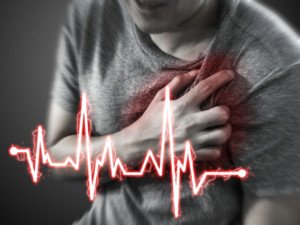
A report says that lean people have an increased risk of death five years after a heart attack, but there’s a flaw in this report.
So if you’re plus size, don’t rejoice just yet.
Plus size or not, you may be stunned to learn about the findings that were presented at the ESC Congress 2013 by French researchers, that lean heart attack survivors (along with very obese and those with disproportionately big bellies) are at increased risk of mortality five years out.
The term “lean” is misleadingly used in the French study. Perhaps “skinny-fat” should have been used instead.
Heart Attack Mortality Risk in Skinny-Fat Survivors vs. Lean Survivors
The paper states that both lean subjects and very obese ones had an increased risk of death after five years.
In addition, high waist girth, severe obesity and also underweight were associated with the biggest risk of death in those who’d had a heart attack.
These results are based on BMI (body mass index) calculations as well as waist circumference.
The paper had actually used the term “underseight,” not just “lean.”
To fitness professionals, the term “lean” is NOT the same as “underweight,” “slender,” “thin” or “skinny.”
In fact, a man who stands 5-9 and weighs 220 pounds could actually be very lean!

Freepik.com, Racool_studio
And a woman who wears a size 6 can actually have excess visceral fat (fat around the vital organs including the heart)!
The Problem with BMI
BMI is a value that results from a calculation involving one’s height and weight. Period.
BMI does not reveal body composition. It’s quite fair for me to wonder, then, if those “lean” heart attack survivors with that increased mortality risk had the so-called skinny-fat bodies.
A skinny-fat person appears “lean,” slender, lanky or thin in terms of size, but their body composition tells a different story.

Shutterstock/Sorn340 Images
If a personal trainer were to take a caliper skin-fold reading of a skinny-fat person to determine body fat percentage, the result would likely be a number in the “acceptable” range.
But according to the American Council on Exercise, the “acceptable” range for women is 25 to 31 percent, and for men it’s 18-24 percent.
If a person who appears slim, lanky or underweight has a body fat percentage in these ranges (gender considering), they will appear soft or flabby, despite being able to wear a size 6 or 8 dress or a slim-fit suit.
What body fat percentage would indicate “lean,” in the true sense of the word, according to ACE?
For women, 14-20 percent, and for men, 6-13 percent. Though a person who’s literally starved (such as from anorexia nervosa) will have an exceedingly low body fat percentage, they’ll also have an exceedingly low amount of muscle.
A lean person who works out and eats healthy, however, will have plentiful muscle mass while having low body fat. They are healthy-fit lean, not skinny-fat.
This is why BMI is worthless to athletes, especially physique specialists and bodybuilders. Their BMIs are often in the “overweight” range, yet their body fat percentages are very low.
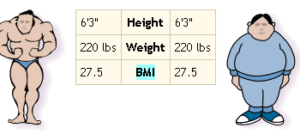
I’d love to know what the body fat percentages and muscle volume levels were of those “lean” heart attack survivors in Professor Simon’s study.
I do not believe these heart attack survivors’ body compositions were comparable to those of athletes and physique specialists, even though dress-size-wise or suit-size wise, they can be interchangeable with athletes and physique enthusiasts.
If BMI is so misleading, why is it used in heart attack research?
Because it’s super easy! Often, research involves investigating and tracking up to hundreds of thousands of people.
Imagine the hairy logistics involved in getting a skin-fold reading on every one of them!
On the other hand, to get the BMI, all the researchers need do is get the patient’s height and weight from medical records. How easy is that?
When medical researchers use the word “lean,” consider the possibility that what they’re referring to is dress or suit size rather than body composition.
Having higher levels of body fat, even if the person has a slender frame, increases risk of health ailments including cardiac-related.
Hopefully, you now know why thinner heart attack survivors were found to have an increased risk of five-year mortality.
 Lorra Garrick has been covering medical, fitness and cybersecurity topics for many years, having written thousands of articles for print magazines and websites, including as a ghostwriter. She’s also a former ACE-certified personal trainer.
Lorra Garrick has been covering medical, fitness and cybersecurity topics for many years, having written thousands of articles for print magazines and websites, including as a ghostwriter. She’s also a former ACE-certified personal trainer.
.
Top image: Shutterstock/pickingpok
Sources: sciencedaily.com/releases/2013/09/130901154034.htm and acefitness.org/acefit/healthy_living_tools_content.aspx?id=2
Depressed over Retirement? Thinking of Suicide?

If you’re depressed over retirement and thinking of ending it all, here’s what happened to a 68-year-old, newly retired man who considered suicide.
He’s a relative of mine and I’ll call him Raymond. When he was around 68, he retired.
In a personal journal that was discovered many years later, he described the days as being empty because he no longer had to get up at a certain time every morning and report somewhere.
He moved out West with his wife to live out his retirement.
Instead of being ecstatic over freedom, Raymond felt doomed and thought of “ending it all.”
This revelation in the journal stunned relatives, as nothing wrenching had been going on in his life at that time.
His wife was all he could ever want in a wife. He now had more time with her. But he had written something to the effect of:
“I’m 68 now. My life consists of nothing but my history. I’ve done everything. There is nothing left to live for. No point in going on.”
Are you newly retired or about to retire, and have similar feelings?
“Transitions in life are always a stressful time full of adjustment,” says Rupali Chadha, MD, former chief of medical staff at Metropolitan State Hospital in Norwalk, CA.
“Risk factors for suicide in general are age (a spike in teens and in the elderly), male gender, white ethnicity, recent loss, lack of social connectivity, death of a spouse or child and financial stressors to name a few.
“We can see that retirement may come at a later age and lead to more social isolation, a lack of feeling of purpose.
“The best ways to handle transitions is to be prepared and have a network. Family, friends, church, a community center and have activities attached to these things.
“If you lose complete ability to feel pleasure and start having thoughts of suicide, see an MD psychiatrist as soon as possible, or at least your MD internist!”
What happened to Raymond?
Raymond’s key comment was, “My life consists of nothing but my history.”
By the time Raymond was 91, those depressed feelings over retirement had become 23 years old. What had happened during those 23 years?
By the time he was 91, his past 23 years had become a rich history that, at age 68, he believed was an empty future.
The history he’s had over the past 23 years is the future at age 68 he couldn’t conceive.
This is depression.
At age 68, he had only one grandchild. “My life is only my history.”
But new history was created in the years since Raymond’s retirement. This includes:
– A grandchild becoming one of the highest ranked junior golfers in the U.S.
– A grandchild graduating from medical school
– 13 grandchildren total
– Memorable experiences with the grandkids, including watching the golfer at his tournaments and watching a granddaughter play in volleyball tournaments
– Many trips with his wife, including to Las Vegas, Hawaii, Disneyland, the mountains and to his kids’ homes
– Nine memorable years with a dog he acquired in his late 70s
– Heavy involvement in bridge clubs and bowling leagues
– And so much more
Retirement Doesn’t Have to Mean Depression

Shutterstock/wavebreakmedia
It’s WORK that causes depression, anxiety and all sorts of sicknesses.
Study after study about work shows that the workplace increases the risk of all sorts of maladies including heart disease, type 2 diabetes and cancer.
Work is associated with obesity, hearing loss, mood disturbances, relationship problems and high blood pressure.
- You’ve certainly heard of workplace bullying. To date, there is NO such thing as retirement-place bullying.
- You’ve heard of workplace hostility. Ever hear of retirement-place hostility?
Who gets headaches while on the golf course or fun day trip? Plenty of people get headaches on the job.
Go to any workplace setting where there are large amounts of people confined to the indoors.
Don’t be surprised if one out of two have a bottle of aspirin in their desks. There’s a reason for that.
 In addition to general psychiatry, Dr. Chadha is also a forensic psychiatrist who treats the brain conditions of the criminally insane and serves as an expert witness in trials. She has a passion for fitness plus how the body, mind and spirit come together to build a healthy individual.
In addition to general psychiatry, Dr. Chadha is also a forensic psychiatrist who treats the brain conditions of the criminally insane and serves as an expert witness in trials. She has a passion for fitness plus how the body, mind and spirit come together to build a healthy individual.
 Lorra Garrick is a former personal trainer certified by the American Council on Exercise. At Bally Total Fitness she trained clients of all ages for fat loss, muscle building, fitness and improved health.
Lorra Garrick is a former personal trainer certified by the American Council on Exercise. At Bally Total Fitness she trained clients of all ages for fat loss, muscle building, fitness and improved health.
.
Top image: Shutterstock/fizkes–
Right Side Pain after Gallbladder Surgery: Causes
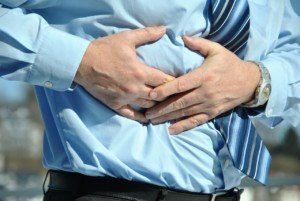
There are several causes of pain in the right side following gallbladder surgery.
“Postcholecystectomy syndrome (PCS) is a complex of heterogeneous symptoms including persistent abdominal pain and dyspepsia that recur and persist after cholecystectomy,” says Akram Alashari, MD, a trauma surgeon at Geisinger Medical Center in PA, and author of “THE POWER OF PEAK STATE.”
Dyspepsia refers to heartburn.
“PCS is defined as ‘early’ if it occurs in the postoperative period and ‘late’ if it occurs months or years after surgery.”
Causes of Right Side Pain after Your Gallbladder Removal
“The symptoms of pain and dyspepsia referred to as PCS can be caused by a wide spectrum of conditions, both biliary and extra-biliary,” says Dr. Alashari.
“Extra” in this context means unrelated to the gallbladder.
“About half of the patients with PCS are found to have biliary, pancreatic or gastrointestinal disorders, while the remaining patients have extra-intestinal disease.”
Biliary causes of postcholecystectomy syndrome include:
“Early PCS can be due to biliary injury, retained cystic duct or common bile duct stones. Late PCS can be due to recurrent CBD stones, bile duct strictures, an inflamed cystic duct or gallbladder remnant, papillary stenosis or biliary dyskinesia.
Biliary dyskinesia refers to motor forms of sphincter of Oddi dysfunction.”
Extra-biliary causes of postcholecystectomy syndrome include:
“Gastrointestinal causes such as irritable bowel syndrome, pancreatitis, pancreatic tumors, pancreas divisum, hepatitis, peptic ulcer disease, mesenteric ischemia, diverticulitis or esophageal diseases.
“Extra-intestinal causes such as intercostal neuritis, wound neuroma, coronary artery disease, or psychosomatic disorders.”
If you have not had your gallbladder removed or don’t have gallbladder disease, but are experiencing right side abdominal pain, this has many possible causes, as you can see, and the list here is not complete.

Dr. Alashari was formerly with Grand Strand Regional Medical Center in SC as an abdominal and critical care surgeon.
 Lorra Garrick has been covering medical, fitness and cybersecurity topics for many years, having written thousands of articles for print magazines and websites, including as a ghostwriter. She’s also a former ACE-certified personal trainer.
Lorra Garrick has been covering medical, fitness and cybersecurity topics for many years, having written thousands of articles for print magazines and websites, including as a ghostwriter. She’s also a former ACE-certified personal trainer.
Do Gallstones Always Cause Sharp Pain or Can It Be Dull?
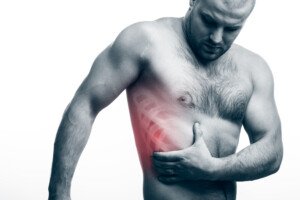
“Yes, patients can have dull pain if the symptoms are secondary to gallstones,” says Akram Alashari, MD, a trauma surgeon at Geisinger Medical Center in PA, and author of “THE POWER OF PEAK STATE.”
Dr. Alashari continues, “Symptomatic gallstones is often referred to as biliary colic. Often when it is dull it will mainly be in the right upper quadrant but it will also radiate to the epigastric area as well as the tip of the scapula.
“Usually, if the pain fails to subside and becomes sharp in nature, then cholecystitis may be developing.”
Sometimes there is no pain.
“The majority of people who have gallstones do not have symptoms; their stones remain ‘silent,’” says Dr. Alashari. “Silent gallstones are often found on an ultrasound or CT scan done for other reasons.
“Silent stones do not need to be treated since the first symptoms of gallstones are usually mild and there are risks involved in removing the gallbladder.
“If you have silent gallstones, you should be aware of the initial symptoms of gallstone disease because you may need treatment if you develop symptoms.”
The most common symptom of gallstones is pain, also called biliary pain. And as you’ve already read, it can be sharp or dull.
“It causes attacks of abdominal pain, often located in the right upper belly just under the lower ribs. You may also feel nausea and vomiting, and pain in the right shoulder or back.”
No Stones but Still Pain
“A similar presentation occurs in the absence of stones if there is dysfunction of the gallbladder.
“This is known as biliary dyskinesia.
“This is due to incomplete emptying of the gallbladder in response to eating.
“This may cause dull pain in the right upper quadrant as well.”

Dr. Alashari was formerly with Grand Strand Regional Medical Center in SC as an abdominal and critical care surgeon.
 Lorra Garrick has been covering medical, fitness and cybersecurity topics for many years, having written thousands of articles for print magazines and websites, including as a ghostwriter. She’s also a former ACE-certified personal trainer.
Lorra Garrick has been covering medical, fitness and cybersecurity topics for many years, having written thousands of articles for print magazines and websites, including as a ghostwriter. She’s also a former ACE-certified personal trainer.
.
Top image: Shutterstock/Everyonephoto Studio
Do Teens Get Abdominal Aortic Aneurysms?
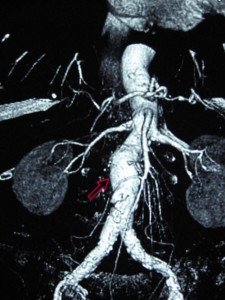
“Abdominal aortic aneurysms are extremely rare in teenagers and adolescents,” says Akram Alashari, MD, a trauma surgeon at Geisinger Medical Center in PA, and author of “THE POWER OF PEAK STATE.”
Dr. Alashari explains that if an abdominal aortic aneurysm is present in a teenager, it “may be associated with inflammation or a genetic connective tissue disorder.
“Genetic disorders that are associated with abnormalities of the aorta include Marfan syndrome and Ehlers-Danlos syndrome.”
If your concerned about the health of your teenager, an abdominal aortic aneurysm should rank very low on your list—in fact, it shouldn’t even be on the list, assuming that your teen has not been diagnosed with a connective tissue disorder.
What should rank high on the list is instilling in your teenager safe driving habits and a very strong aversion to smoking and drinking.
“Ultrasound screening studies have shown that 4 to 8 percent of older men have an occult AAA,” says Dr. Alashari.
“However, AAAs found on screening are generally small; those measuring ≥5.5 cm or greater are found in only 0.4 to 0.6 percent of those screened.
“Abdominal aortic aneurysm occurs four to six times more commonly in men than women.
“Because the incidence of AAA rises sharply in individuals over 60 years of age, the future prevalence of AAA could increase substantially in association with the aging population.”
The repair of an abdominal aortic aneurysm via catheter rather than open abdominal surgery is becoming more common.
And by the way, if your still worried about your teenager’s health, encourage him…or her…to take up strength training. It does wonders for the body AND mind.

Dr. Alashari was formerly with Grand Strand Regional Medical Center in SC as an abdominal and critical care surgeon.
 Lorra Garrick has been covering medical, fitness and cybersecurity topics for many years, having written thousands of articles for print magazines and websites, including as a ghostwriter. She’s also a former ACE-certified personal trainer.
Lorra Garrick has been covering medical, fitness and cybersecurity topics for many years, having written thousands of articles for print magazines and websites, including as a ghostwriter. She’s also a former ACE-certified personal trainer.
.
Top image credit: Intermedichbo at Serbian Wikipedia
How Long Diarrhea Lasts after Gallbladder Removal

Removal of the gallbladder can cause diarrhea, for sure — and it may take a long time to go away.
Following gallbladder removal, the diarrhea that may occur can take weeks to months to go away, says Akram Alashari, MD, a trauma surgeon at Geisinger Medical Center in PA, and author of “THE POWER OF PEAK STATE.”
“Diarrhea following cholecystectomy has been reported in 5 to 12 percent of patients,” he says.
The diarrhea will “resolve or significantly improve over the course of weeks to months.”
What causes diarrhea after gallbladder removal?
Dr. Alashari explains, “The diarrhea is related to excessive bile acids entering the colon.
“In the absence of a gallbladder, bile drains directly and more continuously into the small bowel, which may overcome the terminal ileum’s reabsorptive capacity.
“The increased bile acids in the colon lead to diarrhea (cholerheic diarrhea).
Treatment for diarrhea following gallbladder removal?
“Patients often respond to treatment with bile-acid binding resins such as cholestyramine,: says Dr. Alashari.
“Cholestyramine doses of up to 4 g daily have been suggested for the treatment of chronic diarrhea, though it is reasonable to start patients on a lower dose (e.g., 2 g once or twice daily) and titrate to a higher dose as needed.”
What You Should Know About Gallstone Pain
Gallstones can be the size of a tiny grain of sand to that of a golf ball. You can have one “stone” or several at the same time.
The pain isn’t always on one’s upper right abdomen. It can also occur in the upper central part of the abdomen.
It may also be between the shoulder blades or in the right shoulder.
The duration of the pain may be several minutes to a few hours.
Risk Factors for Gallstones
- Being a woman
- Over age 40
- Obesity, even moderate overweight
- Rapid weight loss
- Sedentary lifestyle
- Pregnancy
- Diet high in fats and “bad” cholesterol
- Diet that is low in fiber
- Diabetes
- Liver disease
- Oral birth control
- Hormone replacement therapy
- Family history of gallstones
Some of these risk factors are dictated by choice.
You can get to work at making the lifestyle changes that will lower your risk of ever having to have your gallbladder removed — and suffering the possible subsequent diarrhea.

Dr. Alashari was formerly with Grand Strand Regional Medical Center in SC as an abdominal and critical care surgeon.
 Lorra Garrick has been covering medical, fitness and cybersecurity topics for many years, having written thousands of articles for print magazines and websites, including as a ghostwriter. She’s also a former ACE-certified personal trainer.
Lorra Garrick has been covering medical, fitness and cybersecurity topics for many years, having written thousands of articles for print magazines and websites, including as a ghostwriter. She’s also a former ACE-certified personal trainer.
.






